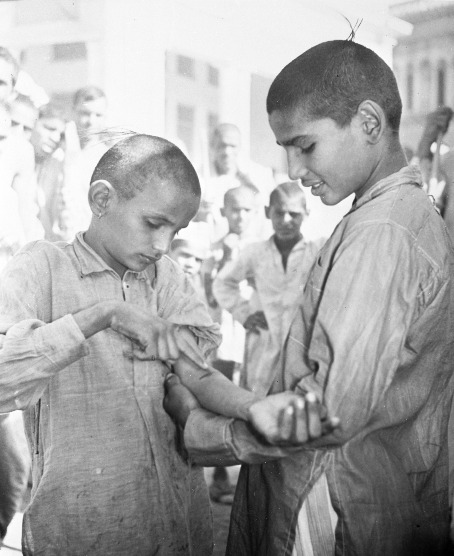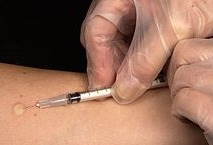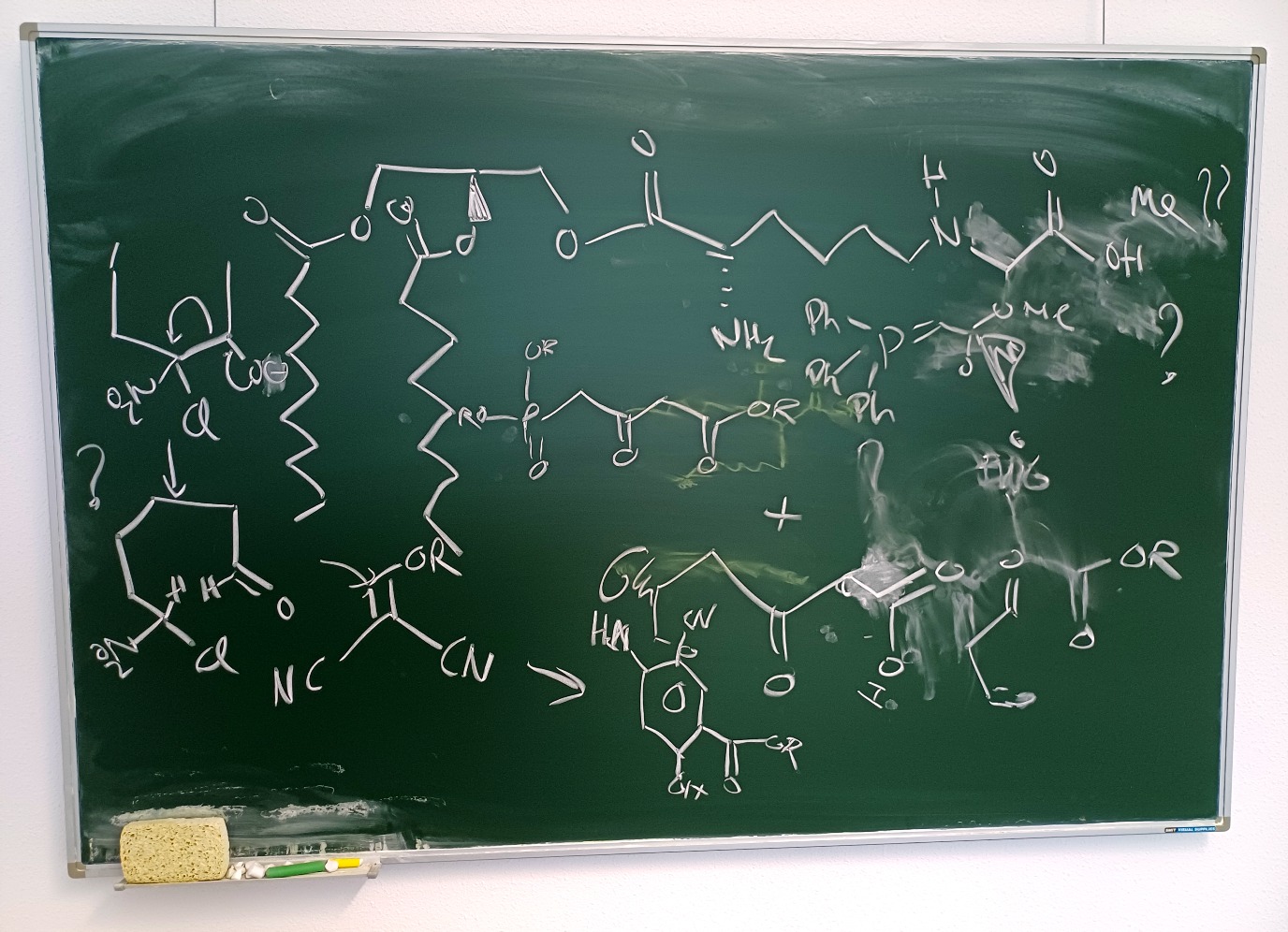15 years of building molecules to fight tuberculosis: towards accessible testing for low-income countries
‘I’m the man who builds the molecules,’ Adri Minnaard says. Minnaard is professor of Organic Chemistry at the University of Groningen, and has been doing research into tuberculosis for over fifteen years, collaborating with an international and interdisciplinary team of researchers. Minnaard builds pieces of the tuberculosis bacteria, which he says is the route to a more effective vaccine and simpler, more robust diagnostics.
FSE Science Newsroom | Charlotte Vlek
Update March 5 2024: Adri Minnaard and his Lipidomics team win the Ammodo Science Award for their research into tuberculosis.

Every year, 1.5 million people die of tuberculosis worldwide, the World Health Organization (WHO) states, although the disease is treatable and preventable. It’s especially a problem in low-income countries.
Why the current vaccine is not good enough
Minnaard: ‘In short, the BCG-vaccine does not work properly. Someone who is vaccinated does develop antibodies against the bacteria, but can still get sick. Moreover, as a result of these antibodies, the easiest way of diagnostic testing is no longer possible.

The standard way to test for tuberculosis is the Mantoux-test: a superficial skin injection with some pieces of the tuberculosis-bacteria. Those who are infected show a skin reaction; the skin turns red and swells. But those who have been vaccinated with the BCG-vaccine also show this skin reaction, even when they are not infected. As a result, you can no longer see if someone who has been vaccinated, has been infected.
A chemical approach
With chemical techniques, you can build exactly those pieces of the bacteria that act as red flags for the body to respond to.
‘We’ve known for about 25 years that the body does take action against tuberculosis, but that the response is not strong enough to fully exterminate the bacteria,’ Minnaard explains. By exposing the body to a recreated piece of the tuberculosis-bacteria, it could already produce the right antibodies.
With chemical techniques, you can build exactly those pieces of the bacteria that act as red flags for the body to respond to: antigens. Minnaard: ‘You can make exactly what you need, and exactly how much you need of it.’
(Text continues below image)

‘We look carefully at how the tuberculosis-bacteria looks, and what lipids there are,’ Minnaard explains. They use techniques such as spectroscopy, a method that uses light to analyze molecules. The next step is to find out what building blocks the lipid comprises: the black board in Minnaard’s office shows the molecular structure of one such a lipid. He points out: ‘Look, we, as chemists can see here that this molecule does not like water. It’s a fatty substance that in turn dissolves in fat.’
When Minnaard’s group more or less has an idea of the structure of a lipid, they go into the lab to make the molecule. Minnaard: ‘Sometimes we have a few options and we are not quite sure which one is right. Then we make these different versions, and we only have to check the synthetic molecules against the originals, and find which is the right one. That is a lot easier than trying to figure out an unknown structure.’
How this differs from the BCG-vaccine
The immune system normally recognizes an intruder by its exterior: usually proteins that are specific to the pathogen are located there. Proteins are also the basis of the BCG-vaccine, and the Mantoux-test shows whether the body has produced antibodies against these proteins.
But for tuberculosis, the body also produces antibodies against fatty compounds on the outside of the bacteria: lipids. And the antibodies produced in response to lipids are different from the antibodies that result from BCG-vaccinations.
Minnaard builds such lipids, with the idea that the body will recognize them as a piece of the bacteria.
A new vaccine?

In 2013, Minnaard received a research grant from the Bill and Melinda Gates Foundation, together with researchers from Harvard Medical School (US), the Institute of Pharmacology & Structural Biology (France) and the Tuberculosis Vaccine Initiative (UK) to develop a vaccine based on these lipids.
Minnaard built the lipids; his scientific partners tested the resulting vaccine on lab animals. These indeed showed an immune response after receiving the molecules built by Minnaard. Unfortunately, three weeks later the animals were not protected from an infection with tuberculosis.
Minnaard: ‘Looking back, I think it was due to an ingredient in our vaccine that was supposed to make sure the immune system would remember the pathogen for a longer period.’ Such an ingredient is used for every vaccine, but is not the same for each pathogen. ‘Of course we tried different substances, but the right one just hasn’t been found yet.’
‘The process of synthesizing a molecule can easily take up to six months,’ Minnaard says. ‘But once the structure is known, it’s not difficult to produce a reasonable amount of it, such as 10 milligrams.’ Which weighs as much as half a grain of rice. `That’s enough for an immunologist to work with for twenty years.’ Therefore, he makes the molecules that are being built by his group available free of charge.
The molecules that have been built by Minnaard’s group in their research on tuberculosis are stored in a freezer at Harvard. Any immunologist can submit a request. ‘We then check if this a bona fide research group. So far we have granted all requests.’ There have been more than a hundred requests so far.
‘This initiative is very powerful for the field,’ Minnaard explains. ‘Someone who wants to do research on tuberculosis can get started right away, instead of having to find a partner first to produce the right molecules.’ And for Minnaard’s group it’s not much work to share these materials once they have been produced: ‘There is a lab assistant at Harvard who simply takes the stuff out of the freezer and sends it off.’
Working towards accessible testing
Minnaard and his scientific partners have moved their focus from developing a vaccine to developing accessible tests, which will be particularly useful for low-income countries. Minnaard: ‘Imagine, a patient comes in. You’ve got a strip with some of these artificially produced lipids. When you pour some of the patient’s blood over these lipids, you’ll see whether there are antibodies against the tuberculosis bacteria in the blood: they will stick.’
This test is structurally different from the Mantoux-test: this is about antibodies that the body makes in response to lipids, whereas the Mantoux-test is about antibodies in response to proteins. The problem of BCG-vaccinations leading to a positive test result is thus circumvented.
From lab to clinic
These lipids are quite robust, in a manner of speaking you could drive them to Uganda in the back of your car.
‘The principle of these lipid-tests works, this much we know,’ Minnaard explains. His medical partners in this project have shown that the purified antibodies do indeed ‘stick’ to the lipids made by Minnaard. The next step is to find out whether it works with test subjects’ blood, and whether the tests produce consistent and reliable results – that’s the phase the team is currently in.
Minnaard sees great advantages for worldwide tuberculosis-diagnostics: ‘This test will also be usable for someone who has had the BCG-vaccine, which is still quite common in low-income countries. And these lipids are quite robust, in a manner of speaking you could drive them to Uganda in the back of your car.’
| Last modified: | 05 March 2024 3.01 p.m. |
More news
-
13 May 2024
Trapping molecules
In his laboratory, physicist Steven Hoekstra is building an experimental set-up made of two parts: one that produces barium fluoride molecules, and a second part that traps the molecules and brings them to an almost complete standstill so they can...
-
29 April 2024
Tactile sensors
Every two weeks, UG Makers puts the spotlight on a researcher who has created something tangible, ranging from homemade measuring equipment for academic research to small or larger products that can change our daily lives. That is how UG...
-
16 April 2024
UG signs Barcelona Declaration on Open Research Information
In a significant stride toward advancing responsible research assessment and open science, the University of Groningen has officially signed the Barcelona Declaration on Open Research Information.

